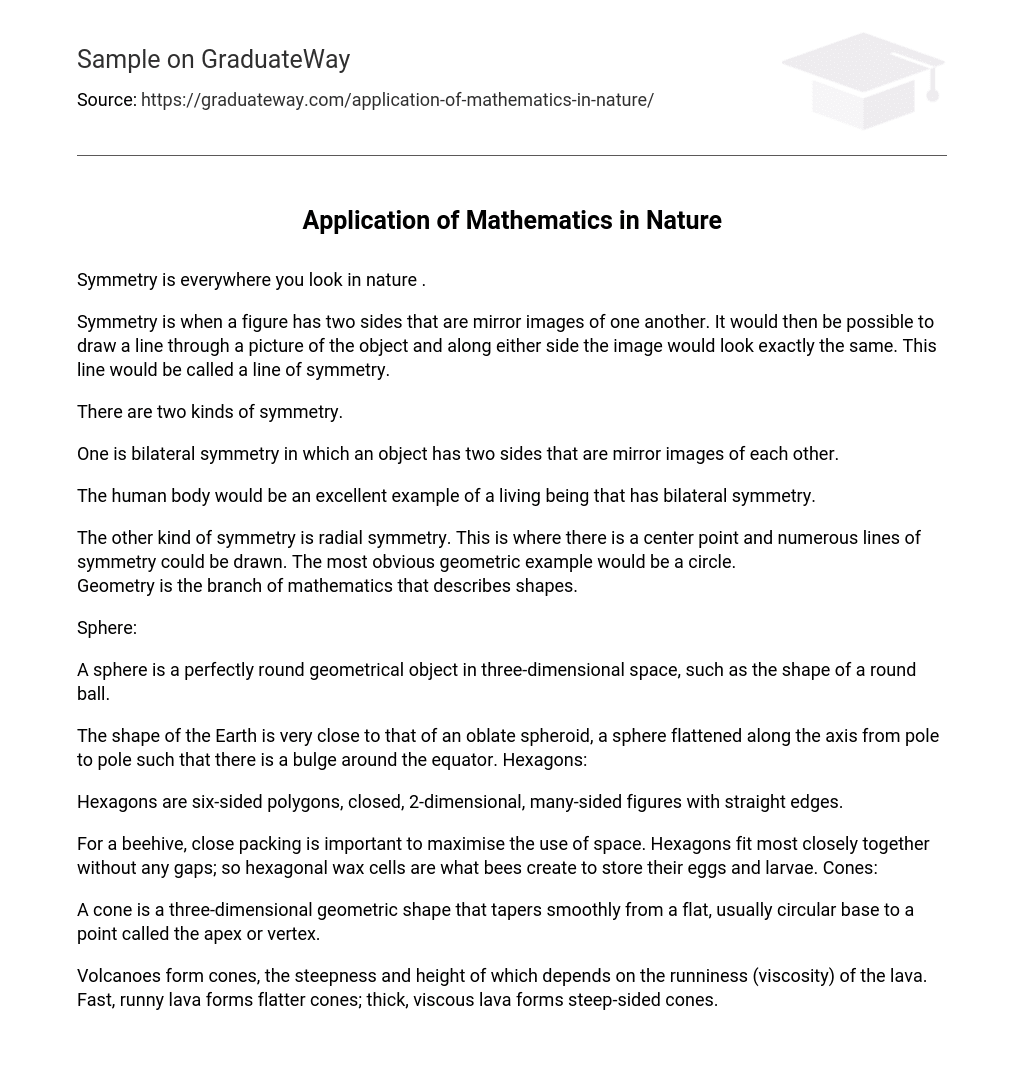Symmetry is everywhere you look in nature .
Symmetry is when a figure has two sides that are mirror images of one another. It would then be possible to draw a line through a picture of the object and along either side the image would look exactly the same. This line would be called a line of symmetry.
There are two kinds of symmetry.
One is bilateral symmetry in which an object has two sides that are mirror images of each other.
The human body would be an excellent example of a living being that has bilateral symmetry.
The other kind of symmetry is radial symmetry. This is where there is a center point and numerous lines of symmetry could be drawn. The most obvious geometric example would be a circle.
Geometry is the branch of mathematics that describes shapes.
Sphere:
A sphere is a perfectly round geometrical object in three-dimensional space, such as the shape of a round ball.
The shape of the Earth is very close to that of an oblate spheroid, a sphere flattened along the axis from pole to pole such that there is a bulge around the equator. Hexagons:
Hexagons are six-sided polygons, closed, 2-dimensional, many-sided figures with straight edges.
For a beehive, close packing is important to maximise the use of space. Hexagons fit most closely together without any gaps; so hexagonal wax cells are what bees create to store their eggs and larvae. Cones:
A cone is a three-dimensional geometric shape that tapers smoothly from a flat, usually circular base to a point called the apex or vertex.
Volcanoes form cones, the steepness and height of which depends on the runniness (viscosity) of the lava. Fast, runny lava forms flatter cones; thick, viscous lava forms steep-sided cones.





